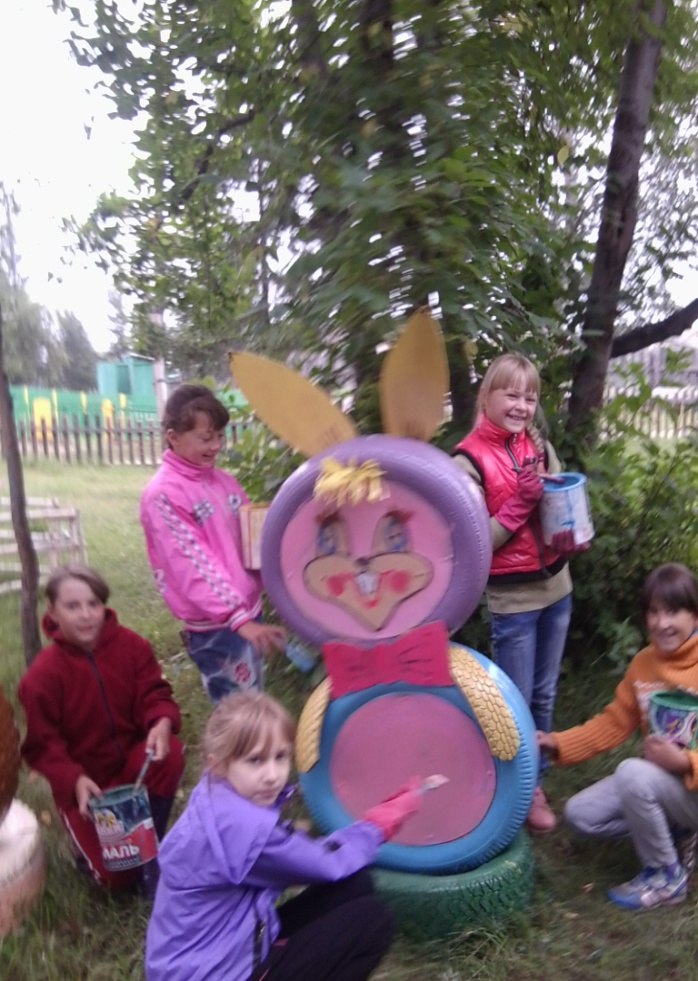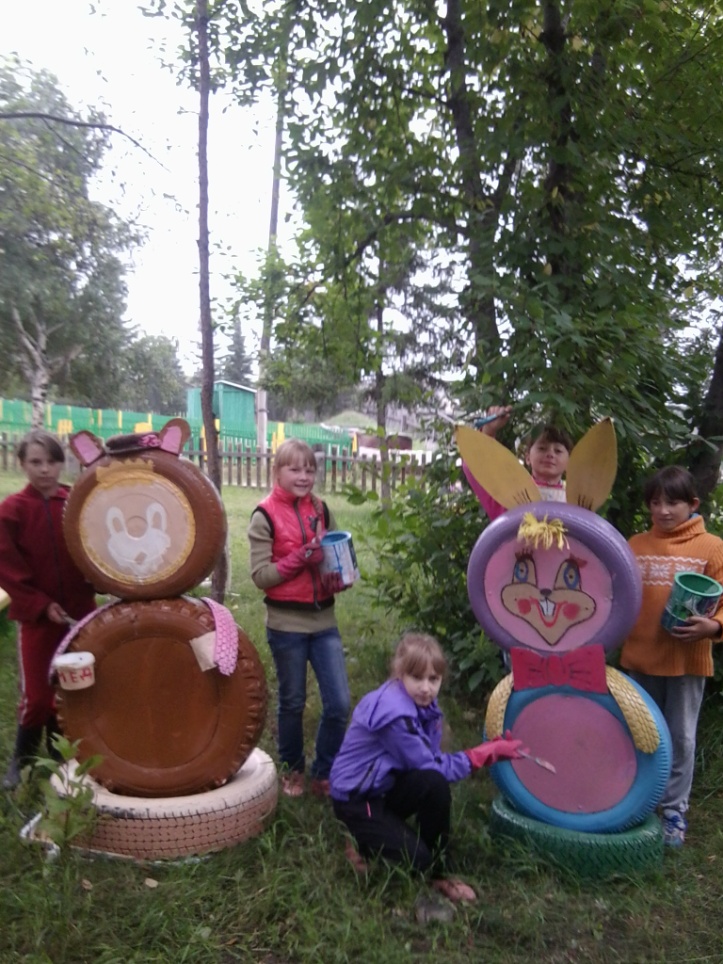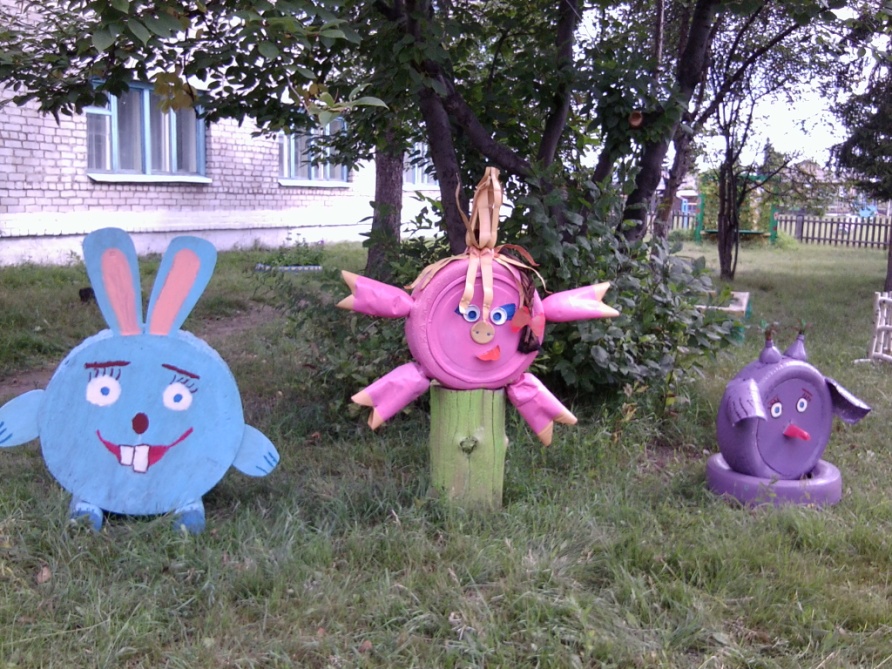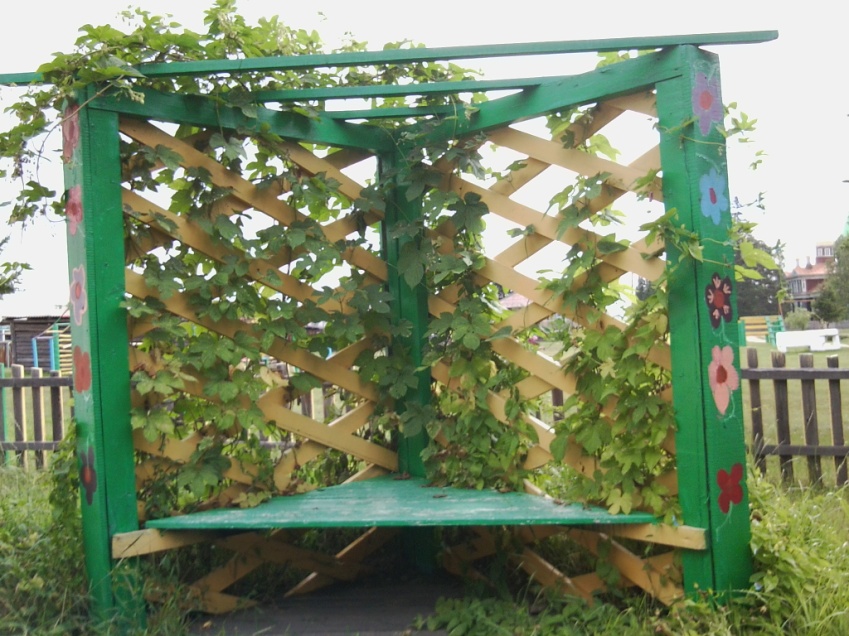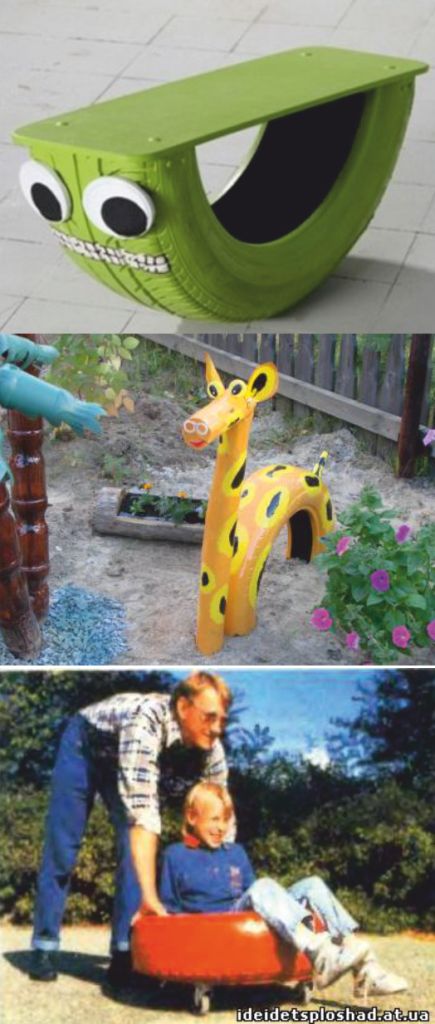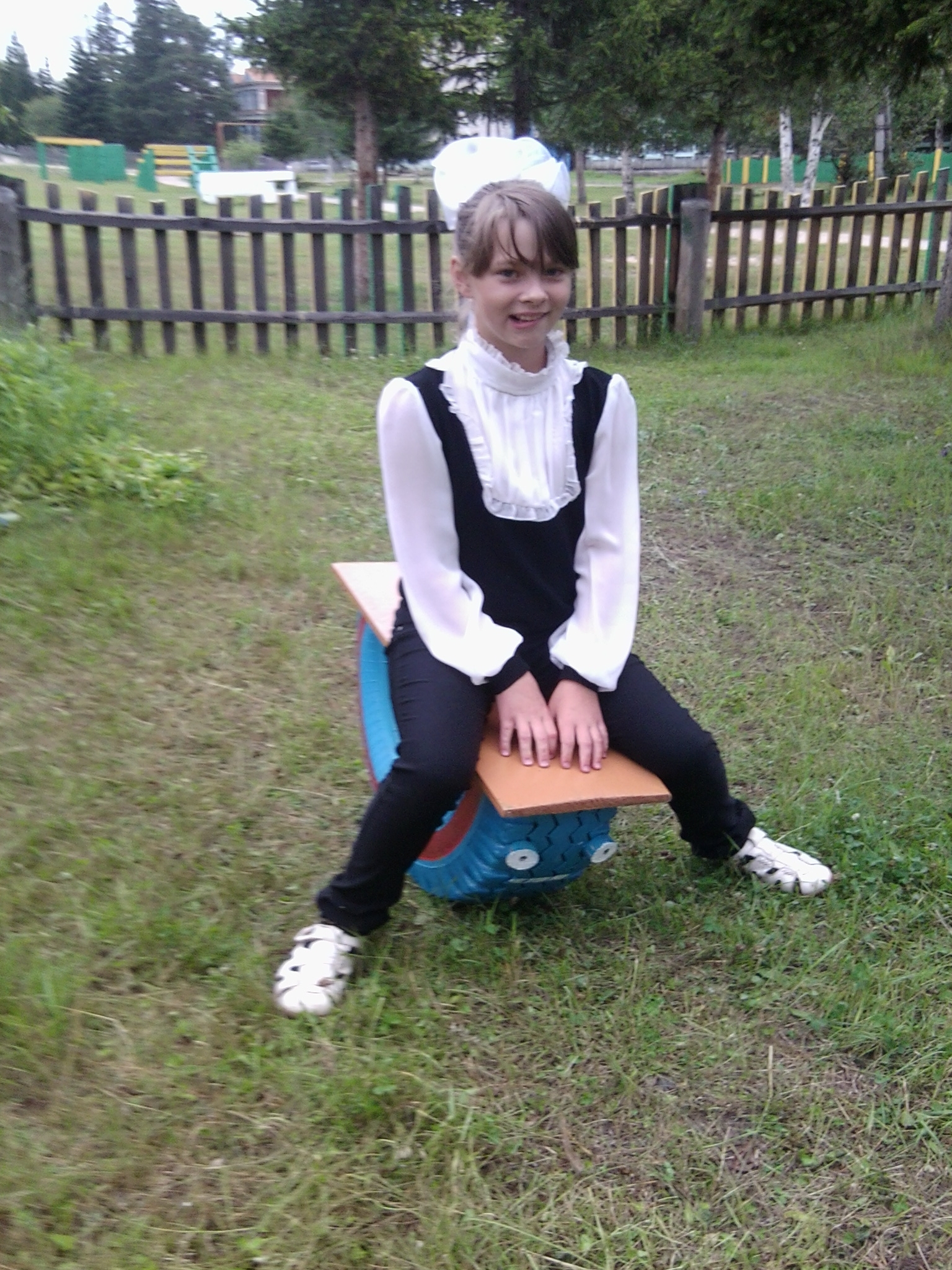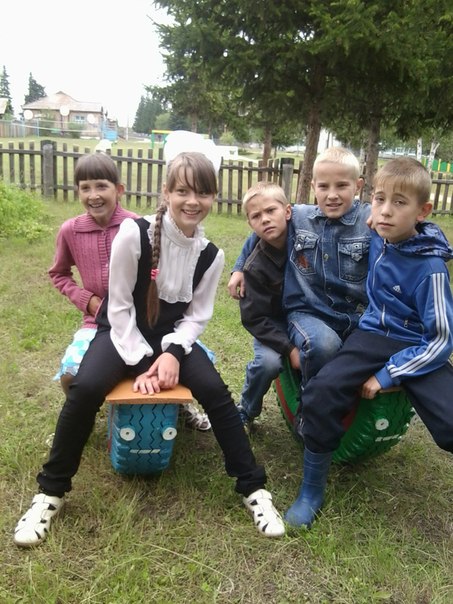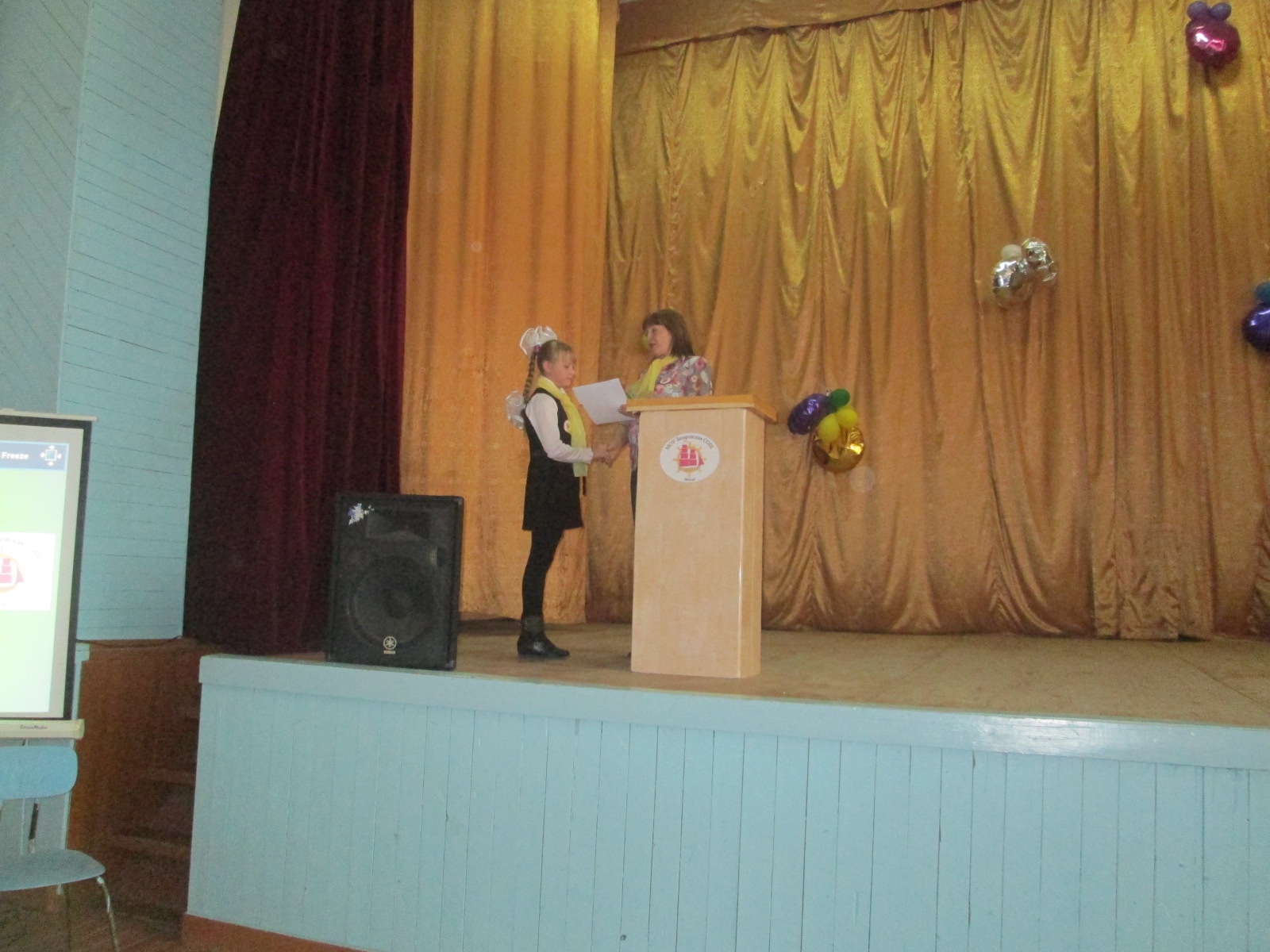Project manager Tukhtaeva Kamola Ravshanovna.
Description of the project. Relevance.
Beloglinovskaya basic school is located in the village of Beloglinka in the center of the village.
School is our second home because most we spend our time here.
The territory of the school is a popular place for all residents, a place for spending free time, especially in spring - summer period. Therefore, the arrangement of a sports ground and a recreation area, a playground and a recreation area, a playground for pupils of the preschool class and a mini-center group is a prerequisite for organizing sports work among students, their parents and young people, as well as organizing cultural recreation, instilling skills healthy lifestyle life through holding mass games, events, competitions.
The improvement of the school yard does not require a lot of money. By combining the efforts of teachers, students, parents, it is possible to decorate the territory of the school, turn it into a recreation area not only for students, but also for the population of the entire village. Beauty created by one's own hands will become the basis for the formation of students' personal qualities, including a sense of responsibility and respect for the results of both their own and others' work.
The Greening the School Yard project requires the active participation of all departments of the school - from the administration to each student.
Objective of the project: To create on the territory of the school yard aesthetic and
functional conditions for children's and family recreation, sports activities after school hours.
Tasks:
Study specialized literature;
To carry out the arrangement of the sports ground and recreation area on the territory of the school;
Create an initiative group to coordinate the work on the project;
Develop a sketch for the design of the school territory;
Hold a competition for the best seedlings between classes;
Employ teenagers for the summer period;
Implement the work plan.
Mechanisms and project implementation plan:
1. The study of special literature on gardening, floriculture, landscape architecture.
2. Drawing up a schedule for the implementation of work on landscaping, landscaping.
3. Implementation of the project of improvement and gardening of the school yard.
4. Planting selected plants in flower beds. Observation and care. Photographing.
2013-2014
Deputy director for educational work, teacher of biology, geography,
class teachers
2. Planting selected plants in flower beds. Observation and care. Photographing.
3. Creative work of students
2014-2015
.
1. Creation of compositional ensembles.
2. Planting selected plants in flower beds. Observation and care. Photographing.
2. Analysis of the work done.
3. Development of new proposals, taking into account the analysis and the need.
2015-2016
class leaders,
Deputy director for educational work, teacher of biology, geography.
Expected results of the project:
During the implementation of the project, the following results will be achieved:
Formation of ecological knowledge of students
Increasing the level of social success among schoolchildren
Landscaping and landscaping of the school yard
Creation of interesting compositional ensembles
Increasing the motivation of villagers to improve their sites.
Practical significance of the project:
This project is an important link in the environmental education of schoolchildren. The ecological direction is one of the priority directions in the development of the school, through the implementation of which moral norms of behavior are formed, aimed at bringing children closer to understanding the beauty of the world around them, awakening their desire for beauty, teaching the art of thinking, love for nature, being kind and useful. Thus, involving students in active environmental research helps to educate them in an ecological culture, respect for nature.
Project implementation period:
2014 - 2015:February - September.
Groups for which the project is implemented:
preschoolers
Pupils of junior, middle, senior age
Parents of students.
During the implementation of the project, it is planned to make a fence of the garden plot, improvement of the school territory (sports ground, benches).
The project is divided into five phases:
Design stage
Development of the project of the school yard:Creation of a project team;
Drawing up a plan for landscaping and landscaping the school yard.
technology teacher
Practical stage
Project resource base
Material:
fencing,
pillars,
inventory: shovels, rakes, brooms, stretchers,
Technical:
machine for garbage removal, delivery of poles, blanks
for fencing, sand, clay.
Personnel:
Director,
manager,
group of students,
Parents.
Project requirements.
1. The school yard in the landscaping project should look like a single whole;
2. The composition should include trees, stumps that grow on the territory;
3. Use various types of decoration: garden benches, vases - flower girls;
4. It is necessary to take into account the cardinal directions;
5. Divide tasks into classes.
Classroom work plan.
1. Discussion of the task.
2. Get to know specialized literature, advice from amateur gardeners,
3. Prepare the land for seedlings.
4. Prepare containers for seedlings.
5. Study the requirements for flower seedlings
6. Sow seeds.
7. Plant seedlings.
Assignments for classes.
1 class - zinnia, zucchini,
Grade 2 - zinnia, pumpkin.
Grade 3 - asters, cucumbers.
Grade 4 - petunias with seedlings, cucumbers.
Grade 5 - marigolds, carrots.
Grade 6 - marigolds, onions
Grade 7 - marigolds, beets, beans.
Grade 8 - thuja, tomatoes, parsley.
Grade 9 - petunia, tomatoes, dill.
Detailed work plan
School garden plan.
May1. Bring water.
2. Repair the fence, gate.
3. Buy garden tools, watering cans.
4. Preparation of potato seeds.
5. Purchase of vegetable seeds.
4. Organize the protection of the garden. (plan - schedule for watchmen, duty personnel, janitor)
5. Cleaning the garden.
6. Delivery of fertilizer.
7. Distribution of fertilizer over the territory.
8. Plowing the garden.
9. Planting potatoes.
June
1. Manual digging under the beds.
2. Formation of beds.
3. Planting vegetables
4. Planting cabbage
5.Decoration of a flower bed
6. Planting flowers
7. Weeding beds
8. Watering
9.Potato processing
10. Potato hilling
11. Loosening beds
July
1. Potato weeding
2. Weeding beds
3. Watering the beds
4. Potato hilling
5. Mowing grass along the fence
August
1. Potato weeding
2. Weeding beds
3. Watering the beds
4. Weeding potatoes, beds.
September
1. Harvesting potatoes
2. Harvest vegetables
3. Salting spices
4. Cleaning the garden
5. Preparing seeds for storage
6. Procurement of land for seedlings.
The landscaping project of the school yard allows not only to consolidate in practice the theoretical knowledge of students about the role of green plants, their environmental features and improve the quality of the educational environment. This project helps students to show their creative activity (planning the yard, making figures of fairy-tale characters, planting and caring for green spaces), build interpersonal relationships in small working groups, to experience feelings of emotional satisfaction and self-realization, including a sense of responsibility and respect for the results of both one's own and others' work.
An important role is played by the joint activities of teachers, students and parents. Parents have the opportunity to observe their child during social development as a person in society. Close cooperation between teachers and parents enhances the positive image of the school. Beautiful area near the school positive emotions, uplifting.The improvement of the school yard does not require a lot of money.
The school territory covers an area of 1.5 hectares. It has a school building, a sports ground, flower beds, trees and shrubs. The condition of the school grounds is always in the field of view of fellow villagers. This imposes on the team a great responsibility to educate students in respect for the wealth of the region, aesthetic taste and the ability to appreciate beauty.
At the back of the yard is an artificial reservoir. Nearby successfully combined: irises, viola, alpine mixture and a swan made from a wheel tire.But this is not enough. We decided to make additions: to build benches for rest. We all know that water is soothing. In addition, it was decided to make additional flower beds.
Flowers are an ideal and versatile tool in landscape design. They gave our schoolyard a unique charm.Each flower is a unique creation of nature. The use of flowers is in their beauty, and people need beauty.Flower beds have become decorative elements of the school area, serve as a wonderful decoration for it. This year has been declared environment and is dedicated to the 155th anniversary of the formation of the Amur Region, so we decided to expand the species diversity of flowers and design a flower bed on this topic. We design flower beds in such a way as to ensure the extraordinary in its splendor, as well as the long-term flowering of our garden.
Every year, flower beds have different sizes, shapes, compositional solutions, combinations of ornamental plants. Their features are taken into account - the height and diameter of the bush, flowering time, compatibility with other species, environmental parameters (tolerance of light and shade) and many other aspects.
We want everyone to feel comfortable in our yard, to be able to plunge into the world of nature at least for a while.
- GOAL:
Creation of an environmentally friendly environment around the school, landscaping and improvement of the school yard.
- TASKS:
To unite the efforts of teachers, students, parents, aimed at the improvement, aesthetic design and landscaping of the school, to create a single spiritual environment, through participation in a common cause, common interests, desires;
- landscape ecological design of the school yard;
- to form ecological and biological knowledge in children;
Improve the school yard for recreation and extracurricular activities.
2. STAGES OF PROJECT IMPLEMENTATION.
Project implementation period:February-September.
Groups for which the project is implemented:
* Preschoolers
* Schoolchildren of junior, middle, senior age
* Parents of students
The project is divided into five phases:
Stage name | Target | Period of execution |
|
Preparatory | Motivation, goal setting of the project | February |
|
Design | Building an Activity Scheme | February |
|
Practical | Project implementation | March - June |
|
Analytical and corrective | Analysis of intermediate results of work and introduction of changes | May June |
|
Final | Comparison of actual and desired results. | Aug. Sept |
Preparatory stage
Design stage
Practical stage
Event | Responsible |
|
Purchasing seeds and growing seedlings | ||
tillage | biology teacher, high school students |
|
Transplanting | biology teacher, students in grades 5-7 |
|
Improvement of the territory near the artificial reservoir | ||
biology teacher, students in grades 5-9 |
||
Autumn work: Preparation of seeds for storage; tillage | biology teacher, supply manager, students of grades 5-9 |
Project resource base
Material:
Equipment: shovels, rakes, brooms, stretchers, buckets
Technical:
Tractor for the delivery of land.
Personnel:
manager,
The team of teachers
A team of students.
Project requirements.
1. The school yard in the landscaping project should look like a single whole.
2. Use various types of decoration: garden benches, vases - flower girls, alpine slide, pond.
3. It is necessary to take into account the types of plants when planting in different parts of the school yard.
5. Distribute tasks by class.
3. CALENDAR PLAN OF PROJECT IMPLEMENTATION
p/p | Name of the event | Dates | Responsible executors |
|
STAGE 1 Preparatory (from 15.02.2013 to 20.02.2013) |
||||
Conducting an analysis of the ecological state of the school territory | 15.02.2013 | Biology teacher, supply manager |
||
Holding a drawing competition "Schoolyard through the eyes of children" | 15.03.13 – 20.0313 | Art teacher |
||
STAGE 2 Design (from 20.02.2013 to 02.03.2013) |
||||
Creation of a project team | February 20, 2013 | Biology teacher |
||
Drawing up a plan for landscaping and landscaping the school yard | 20.02.13 - 27.02.13 | Biology teacher, initiative group of teachers and students |
||
STAGE 3 PRACTICAL (from 03/03/2013 to 09/30/2013) |
||||
Sowing seedlings | 04/01/13 - 04/14/13 | Biology teacher, student of grades 5-7 |
||
Soil cultivation. Planting flower seeds in the ground. | 05/05/13 - 05/10/13 | Biology teacher, student 7-9 grades |
||
Transplanting. | 05/30/13 – 08/06 13 | Biology teacher |
||
Registration of the banks of the reservoir and landscaping of the territory near the reservoir | 06/03/13 - 06/12/13 | Biology teacher, student 7-9 grades |
||
Care of planted flower crops | During the summer period | Biology teacher, student 5-9 grades |
||
Collection of seeds, preparation of seeds for storage. | 09/20/2013 - 09/30/13 | Biology teacher, student 5-9 grades, caretaker |
||
Polyethylene film
15 m
300 rub.
For an artificial reservoir
fuel and lubricants
10 l
350 rub.
For the transport of land
Dye
10 kg
1200 rub.
For painting flowerpots and benches
TOTAL:
4970
Of these: 2000 rubles - funds collected from school discos,
3000 rubles - assistance from the village administration
5. Expected results
The development of practical skills in growing plants in students.
Education of a positive attitude among students both to their own and to other people's work, love for nature.
Enrichment of students with environmental and biological knowledge.
Formation of students' skills of research activity.
Strengthening motivation for volunteering, children's interest in work.
Decoration of flowerbeds dedicated to the year of the environment and the 155th anniversary of the formation of the Amur Region.
6. Conclusion
MOKU OOSH s. Belotserkovka works in the cultural and aesthetic direction. Good landscaping of the school and keeping it in order is one of the leading tasks in the education of students, so the school yard, as an integral part of the school, must correspond to the image of the school. The improvement of the school yard forms in schoolchildren a love for their native nature, responsibility for its condition, brings up the ecological culture of students and respect for the environment.
Schoolyard is a broad concept. We want to create a single complex where we could realize all our abilities, requests, interests - that was the idea of this project.
The yard for us is a world where everyone feels comfortable, has ample opportunities for self-realization for the benefit of themselves and others, gaining experience of creative success in life.
Social project
"Beautification
school yard"
Implementation mechanism:
1. Introduce students to the project.
2. Select those responsible for the implementation of the project.
3. Carry out all planned activities on time.
4. Control and provide the necessary assistance.
5.Summarize the results of the project.
1. Questioning.
2.Agitation.
3. Action "Auction of ideas"
4. Open class hours "Schoolyard of my dreams"
5. Presentation of the school.
Functional responsibilities:
Students form working groups under the guidance of commanders and class teachers.
Project Goals:
Creation of an aesthetically attractive design of the territory that meets modern architectural, planning and environmental requirements
Project Objectives:
Improving the aesthetic image of the natural environment through the improvement of the territory and the school building.
Acquaintance with the species diversity of plants used in landscaping.
Acquaintance with various forms landscape design territory.
Acquisition of labor skills, ability to work with agricultural and garden tools.
Expected results
- increasing the level of interest in the aesthetic design of the school site
- development of organizational skills of students
- beautification and landscaping of the school territory
- improving the environmental and aesthetic culture of students
- creation of favorable conditions for the preservation and promotion of health
- attracting the attention of the population to the problems of landscaping and landscaping, maintaining environmental safety at the place of residence
- promotion of ecological culture of students
- expanding the species diversity of plants in the school area to improve the educational environment
Resources:
Personnel: teachers, students, biology teacher, technical staff.
Informational:special literature, Internet.
Material: soil, seeds, garden tools (shovel, watering cans, etc.)
Financial: at the expense of the budget educational institution.
Project implementation period – February-May
Stages of project implementation
Stage 1 - preparatory
Stage 2 - practical (research)
Stage 3 - generalizing
Project description
Landscaping and landscaping of the school area plays an important sanitary-hygienic and educational role. The idea of our project lies in the consciousness of a well-groomed, aesthetically correct area with elements of landscape design on the school grounds.
Our first priority for the implementation of the idea was to study the literature on landscape design.
Nice dress starts with a pattern, and a beautiful plot starts with a sketch drawn on a piece of paper.
I. Rationale for the relevance of the project
It is not easy to teach a person to think not only about himself, but also about the world around him, especially this problem is relevant for teenagers. Conservation and protection of nature allows teenagers to feel their importance, maturity, to feel their ability to do important, useful things, to really see the results of their activities, to bring joy to others, to create beauty.
The school is our common home, which we love and want to see beautiful not only from the inside, but also from the outside.
We chose this problem because:
- the school site is not landscaped enough;
We believe that the project will help students express themselves, gain confidence.
The school located in the center of the village, the school site should naturally be an example for the villagers.
In order to correctly assess the situation, we examined it from different angles: aesthetic, ecological, biological, social, medical. The project will help children express themselves, gain self-confidence, improve the school yard, and take part in the life of the school. Therefore, the active life position of children is now important for the future. The project serves to solve this problem.
II. Goals and objectives of the project
Goals:
- assistance in improving the ecological situation in the village through the improvement and landscaping of the territory of the school site
- the formation of the ecological culture of students on the basis of labor, spiritual and moral development of the individual through the joint activities of students, parents, teaching staff, villagers in the improvement of the school site
- using collective creative activity to carry out landscaping of the school site.
Tasks:
- to form an active citizenship among the younger generation
- education of aesthetic culture and ecological consciousness of schoolchildren
- to promote the moral, aesthetic and labor education of schoolchildren
- Strengthen the regional focus of environmental education
- involve children in the search for mechanisms for solving urgent problems of the local community through the development and implementation of socially significant projects
-create a sense of personal responsibility for the state of the environment
- to develop the initiatives and creativity of schoolchildren through the organization of socially significant activities - the improvement of the school territory
- Transform and improve the school grounds
- to carry out information and educational work to promote the environmental culture of students
III. Terms and stages of project implementation
Terms: February-May 2014-2015.
Stages:
Stage 1 - preparatory
Stage 2 - practical
Stage 3 - generalizing
Stage 4 - informational and educational
IV. Information about project executors
The executors of the project are students, teachers of the school.
V. Expected results
Increasing the level of interest in the protection and conservation of the natural environment;
- development of organizational skills of students;
- landscaping and landscaping of the school territory;
- the annual organization of the environmental team of the school,
- improving the ecological culture of students;
- creation favorable conditions to preserve and improve the health of all participants in the educational process;
- attracting the attention of the village population to the problems of landscaping and landscaping, maintaining environmental safety at the place of residence;
- promotion of ecological culture of students;
-expanding the species diversity of plants in the school area to improve the educational environment;
VI. Plan of the main activities of the project
Term.
Responsible
Result
Assessment of the environmental situation. Collection and processing of information, questioning, survey public opinion students, studying the state of children's health, students' employment, and other research on the topic of the project
February
Cl. hand-whether
Definition of the purpose and objectives of the project
May
Organization of a competition among students for the best sketch of a flower bed "Auction of Ideas"
February
Uch. ISO
Students 5-11 cells
Holding open lessons, weeks of biology, ecology, competitions of drawings on ecology, etc. extracurricular activities
During
of the year
Drawing up a cost estimate for the implementation of the project.
Purchase of seeds
March
Drawing up a sketch of the landscape design of the school territory
April
Uch. ISO
Organization of creative groups working on the theme of the project
March
Akberova Z.R.,
Preparing the territory for landscaping and landscaping
May
Teaching Biologist, Technology
Organization of the work of environmental and labor teams
May
Uch.geography
Planting flower seedlings
Growing seedlings
May
March
Teaching Biologist, Technology
flower growers
plant care
April May
Labor sectors, flower growers
Maintenance of grass cover and flower beds on the school grounds
May June
Holding a school fair
March
Summing up the project
presentation.
May
school grounds
Landscape design of a school site is an interesting process, primarily because the students themselves can act as designers. To do this, you can hold a competition among the classes for the best design project, the idea of which will form the basis for the improvement of the school territory. After the study of the territory has been carried out, the composition and type of soil have been identified, and a situational plan has been drawn up, it is possible to proceed to the definition of functional zones. Zoning of the territory is carried out in accordance with the functional features of the school.
What zones can be included in school grounds project:
- sports area (football field, basketball and volleyball courts, gymnastic ground with horizontal bars)
- school play area (playground for students primary school, playground for quiet games)
- parterre zone (created directly in front of the entrance to the school)
- solemn zone (platform for holding rulers)
- transport zone (a platform for studying the rules of the road)
- specialized area for classes in fine arts
- area for creative games (for example, theatrical)
- fruit zone (for biology and botany)
- economic school zone (a place for storing various inventory)
- area for cycling or roller skating
- green recreation area, etc.
Functional zones are separated from each other by such elements of landscape design of the site as: hedges, paving paths, flower beds, alleys. Trees or shrubs are planted around the perimeter in the form of a hedge, which helps in protection from external noise and dust, creating a special microclimate on the school grounds.
Large trees and shrubs are mandatory in the school yard, creating a natural shade that suppresses the impact sun rays. An alternative for them can be covered verandas or gazebos.
Types of green spaces on the school site:
- comfortable landscaping of the territory, designed to protect from wind, sun and prying eyes
- ecological gardening involves the use of native plant species to support bird and small animal populations. The use of native plant species adapted to local conditions preserves the character of the region both biologically and visually
- plantations of fruit plants
Venues for active games or sports on the school site may or may not be provided with permanently installed sports or play equipment. Equipped sites must be protected from ultraviolet rays. This can be achieved with a combination of large trees and artificial roofing. Open areas involve the use of lawns, paving or special surface. And you need to understand that the grass needs the sun for healthy growth. If this condition is not met, it is better to replace it with a special coating (for example, based on crumb rubber).
In passive playgrounds and school grounds, for example, outdoor lessons should use small trees in combination with artificial roofing. Since the lawn will not feel comfortable in shady areas, it is recommended to replace it with a special coating or paving.
The combination of facilities and green spaces is also recommended in the area of basketball, volleyball and tennis courts to create shade for players and spectators. In this case, the trees should be planted at a distance of 10 meters (or a little less, depending on the size of the root system of the tree) from the paved area.
The main entrance, as a rule, is the hallmark of any school, so it should be especially decorative. Decorative groups of plants and colorful flower beds would be appropriate here.
Factors to consider when designing landscape design and beautification of the school grounds:
- Trees and shrubs should not interfere with the supervision of children in the school garden.
- Dense planting of trees and shrubs directly in front of school buildings and verandas can pose a safety hazard. Frequent plantings can serve as a "mask" when attempting vandalism or breaking. Use ground cover plants in high-risk areas. Do not cover security lighting with shade from green spaces.
- The best "friend" of the school site is partial shade. Avoid planting grass and flowers in completely shaded areas, as they require sunlight to be healthy. Before landscaping and landscaping school grounds make sure there is water in the area. For example, an automatic watering system will come in handy, as newly planted plants need more frequent and deeper watering than mature plants.
- Do not plant large trees close to school buildings.
- Groups of shrubs or ground cover plants of the same species will look more harmonious than a group of plants of different species.
- To help maintain the school garden, use mulch in flower beds and decorative groups. This will reduce the germination of weeds.
- When planting trees, consider the width of the lawn mower. It must move freely between plants, buildings and fences, without damaging the paving of the paths.
- For planting, you need to choose plants that are easy to care for, hardy, winter-hardy and most suitable for your climate and soil conditions.
- Trees should be planted at a sufficient distance from each other.
- Regular feeding and pruning of plants will ensure proper care of the garden.
When landscaping the school grounds, never use plants that have poisonous parts, such as leaves, bark, fruits, or seeds. Do not use plants that are obvious allergens.
The range of trees for planting along the perimeter of the school territory consists of large plants: maple, birch, common aspen, elm, linden, ash. In addition, trees can also form the basis for decorative groups of plants. Along with the trees listed above, you can use white willow, mountain ash, chestnut and bird cherry.
It is mandatory to use coniferous plants on the school territory, as they not only have antimicrobial properties, but also retain their decorative effect. all year round. The most common of them are Siberian larch and prickly or common spruce. Creeping varieties of juniper will serve as a decoration for the school garden, not only as padding for more tall plants, but will also look great in single plantings.
Indispensable in landscaping school plots and various types of shrubs: mock orange, spirea, lilac, forsythia, derain, wild rose, cotoneaster, vesicle and snowberry.
One of the attractive elements of landscape design of the school site is a flower garden. More often, flowerbeds, borders and borders are used on school territories, since the layout of the plots is, in most cases, quite geometric. The most popular among annuals are: aster, marigolds, petunia, salvia, cosmea, zinnia, snapdragon, calendula, balsams, coleus, cineraria. Tulips and daffodils are often used in flower beds. And representatives of perennial plants are dahlias, daylilies, lupins, peonies and phloxes.
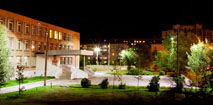 School ground lighting
School ground lighting
Another important element of the improvement of the school territory is landscape lighting. This is especially true in the winter period, when daylight hours are significantly reduced. Lighting acts as one of the guarantors of the safety of children, parents and teachers.
Functional and decorative lighting is used in school areas. Functional lighting is used on sports grounds, along the perimeter of the school territory, along the paths. Decorative lighting serves to illuminate small architectural forms, some plants with an interesting texture and parts of the building (for example, the main entrance).
Lighting of areas of the school territory requires compliance with special standards and rules. Therefore, when choosing an artist installation work you need to be very careful, and it is better to entrust the project of lighting the school grounds to landscape studio professionals.
An example of the improvement of the school site, made by the designers of our studio, you can see in the finished
Zakharovskaya middle comprehensive school
beautification project
"Our School Yard"
Klimova Alexandra Nikolaevna
MOU Zakharovskaya secondary school grade 5
Supervisor:
Kurpisheva Natalia Nikolaevna
primary school teacher
"Our School Yard"
Klimova Alexandra Nikolaevna
the Russian Federation, Zabaykalsky Krai
Krasnochikoysky district, the village of Zakharovo
Municipal educational institution
Brief summary of the project.
The paper tells about how modern design elements were planned and created on the territory of an elementary school, single flower plantings were carried out, and a medicinal bed was planted. The work is done in the form of a project, presentations are presented, in which the text is supplemented with photographs and drawings. This material designed for students from grades 1 to 11 and can be used in technology lessons.
"Our School Yard"
Klimova Alexandra Nikolaevna
Russian Federation, Trans-Baikal Territory
Krasnochikoysky district, the village of Zakharovo
Municipal educational institution
Zakharovskaya secondary school, grade 5
annotation
Objective of the project: organizing and carrying out events for the improvement of the school yard: growing flowers and making decorations.
Project objectives:
- to draw the attention of students to solving urgent problems of the school, active and conscious improvement of the school yard;
- conduct a sociological survey among students, school employees, parents to identify proposals for the improvement of the school yard;
- develop and implement a plan for landscaping and landscaping the school yard;
To instill the skills of environmental behavior, education of love for nature.
Project initiators and organizers are 4th grade students
Project implementation period: 1 year (2013-2014)
Practical significance: public involvement in the significance of the project; improving the surrounding landscape of the school yard; aesthetic correspondence between the school and the created cultural landscape.
Research methods:
1. Observation, survey, analysis.
2. Study of theoretical material, analysis of literature.
3. Making images of fairy-tale characters from waste material.
Findings and Conclusions
1. The problem of improvement and gardening of the school territory is relevant not only for students, but also for the public as a whole.
2. Landscaping and landscaping of the school area plays an important sanitary, hygienic and educational role.
3. In addition to the aesthetic function, the practical function is very important. The modern school is focused on ensuring that the child receives not only theoretical knowledge, but also direct practical skills. Therefore, what the student learns during the design and implementation will be useful to him in life.
4. Involving students in active environmental research and affairs helps to educate them in an ecological culture, respect for nature.
5. The landscaped area of any school is admired by guests, and students and teachers will feel comfortable and harmonious.
"Our School Yard"
Klimova Alexandra Nikolaevna
Russian Federation, Trans-Baikal Territory
Krasnochikoysky district, the village of Zakharovo
Municipal educational institution
Zakharovskaya secondary school, grade 5
Scientific article (job description)
If every person on a piece of land
his did everything he can, how beautiful
the earth would be ours.
A.P. Chekhov
I. Relevance and importance of the project "Our schoolyard"
The priority of environmental education today is recognized by the entire world community. Therefore, at present, people have begun to pay more and more attention to the condition of the territories adjacent to their home, place of work, educational institutions and other objects of social importance. And many of these areas often require significant improvement.
“The theater starts with the wardrobe, and the school starts with the school yard, because the yard is the face of the school.” The building of the Zakharovskaya secondary school was built in 1971. The problem of improving the school territory has become relevant from the first years of its existence. As the school grows and develops, this problem remains relevant for us at the present time, which contributes to the education of aesthetic taste in children, the formation of a sense of responsibility for their school and the desire to change the face of the school for the better. The school yard becomes an effective means of shaping the ecological culture of students,the formation of their new civic consciousness. The process of improvement and gardening of the school territory is very important and responsible. Under the improvement and landscaping of the school territorymeans not onlyproviding favorable and safe conditions for sports activities, recreation, games and entertainment for students, which is important in itself, but also the creationaesthetically attractive appearance of the school yard. Beautifully designed, richly surrounded by greenery and well maintained school yard educates in childrensense of beauty, love for nature and native land. In addition to what constitutes a school playground, the prestige of the educational institution itself also depends.
At the beginning of the 2013-2014 academic year, the “Young Researcher” circle surveyed the territory of the elementary school and noticed that our school yard does not look aesthetically pleasing: somewhere the territory is overgrown with thick turf, in the summer there are not enough flower beds, few development zones. There is also no place to rest.
Application No. 1
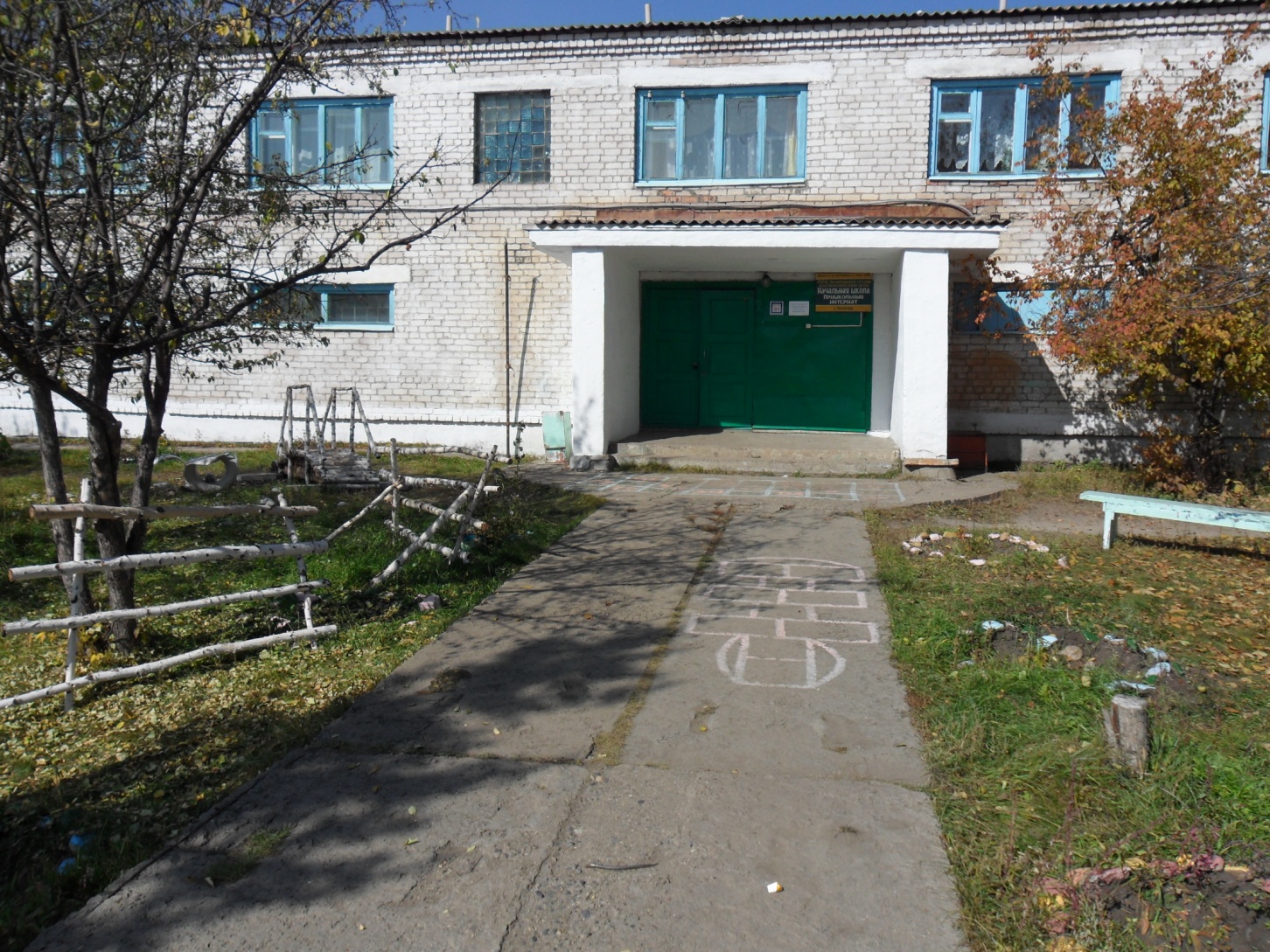
A survey of students, school employees, parents showed that it is necessary to carry out a number of activities in order to create corners with new beautiful flower beds, benches, and a gazebo. This is how our project for landscaping and landscaping of the territory of the elementary school called "Our School Yard" was born.
Any undertaking, if you apply creative possibilities, fantasies and activity, can be completed successfully. The improvement of the school yard did not require much money. Having united the efforts of teachers, students, parents, we have decorated the territory of the school, turning it into a recreation area. The beauty created by one's own hands has become the basis in the formation of the personal qualities of students, including a sense of responsibility and respect for the results of both their own and others' work.
The design of the school yard performs the following functions: cognitive, aesthetic, evokes positive emotions, has relaxation effects, promotes the skills of creating figures from waste material and caring for flowers.
II. Collection and analysis of information
2.1. Collection of information on the problem.
Starting the development of the project in "Our School Yard" at the first stage, the literature on the improvement of the territory, the cultivation and care of flower and ornamental plants was studied. Helpful Hints and recommendations we received from various sources. On the class hour There was a discussion about the improvement of the school grounds. On the websites of the Internet and magazines "1000 Tips" we picked up photographs of original small architectural forms that can be placed on the territory of our school. After analyzing these sources, we came to the following conclusions: the project is feasible, but it is impossible to do without the help of parents.
2.2 Analysis of a sociological survey and questioning
A social survey was conducted among students in grades 3-4, school employees, parents according to the questionnaire: Appendix No. 2
Do you think the problem of improving the territory of the school is relevant?

What would you like to create on the school grounds?

Would you like to take part in the improvement of the territory?

All questionnaires were filled in by the respondents themselves in our presence. 60 respondents took part in the sociological survey, of which 10% were school employees, 20% were parents and 30% were school students.
Conclusion: Most of the respondents consider the problem of improving the school yard to be urgent and are ready to take part in its renovation.
2.3. Public Relations:
The head of the rural settlement "Zakharovskoe" Motorina Zinaida Kuzminichna
“The school yard is the visiting card of our educational institution, so the territory needs to be changed, supplemented and constantly introduced some creative elements. But the yard must also be aesthetically pleasing, constantly well maintained. This problem is relevant not only for students of the school, but also for the society of the settlement as a whole.
Which authorities are responsible for solving this problem? With this question, we turned to the director of the school, Aksyonov Ivan Mikhailovich.
Aksyonov Ivan Mikhailovich: “Our school management structures should solve the problem. To implement the project, it is necessary to involve all the students of the school, parents and teachers who will gladly come to help.”
We addressed the head teacher for educational work Kryazheva Olga Vladimirovna with the following questions:
Do you think the improvement of the school yard is important for the image of the school?
Yes. Paramount to the image of the school.
Are you satisfied with the design of the schoolyard of the elementary school in which it is located now?
The design suits, but the equipment does not. Desirable: swing, horizontal bar for boys.
What would you advise us to improve the comfort of the schoolyard of a high school?
The idea with fairy-tale characters should become a reality of high school.
Stages of work:
The first stage - February-March:
Development of a project for the improvement of the school territory, selection of sketches of figures fairytale heroes from waste material.
Second stage: April-May.
Preparation of planting material - flower seeds, seedling cultivation, spring tillage, preparation of flower beds, project implementation.
The third stage: June - August: planting care at the school site: watering, weeding; experimental work; making fabulous figures, defending the project at school acceptance.
Fourth stage: September: seed collection; summarizing the work.
Flowers are the perfect versatile tool in landscape design. They will give our schoolyard a unique charm. We calculated the number and type of plants that are needed for planting. In April, all the guys in our class brought seeds different colors and planted seedlings. In May, the seedlings were picked and began to prepare flower beds for planting seedlings of flowers. The very first planted a garden bed with medicinal plants. Common chamomile, Jerusalem artichoke, mint, calendula were planted. These plants are unpretentious to lighting, very resistant to heat and drought, grow in any planted place, cold-resistant.
Calendula is a medicinal plant. Calendula blooms with beautiful orange-yellow flowers, and in addition to being used for medicinal purposes, it is also widespread in decorative floriculture. For treatment, only inflorescences are used, that is, baskets that are harvested during the flowering period, when the basket has fully blossomed. Leaves and flower stalks are not used.Calendula is used for medicinal purposes, anti-inflammatory, wound healing agent. It is used for both internal and external use.
Angina: you need to take one tablespoon of dried calendula flowers, pour a glass of boiling water, leave for 1 hour, wrap tightly, strain. It is recommended to gargle with this infusion 2 times a day.
"Jerusalem artichoke- this is an ideal plant, sent to us by fate itself, the Slavs. Jerusalem artichoke or, as it is also called in Russia, "Earth pear" is a perennial tuberous plant. It is a close relative of the "sunflower". Jerusalem artichoke came to Russia in the 18th century from the other end of "geography". North America is considered the birthplace of this wonderful plant.Despite its unique nutritional and biological value, Jerusalem artichoke has not received proper distribution in Russia. Only enthusiasts are engaged in the cultivation of Jerusalem artichoke. Meanwhile, Jerusalem artichoke has many advantages. First of all, it is a valuable food plant that can replace potatoes if necessary. Jerusalem artichoke is unpretentious to soils, undemanding to moisture and light, almost not susceptible to diseases, not afraid of any pests. In one place, it can grow up to 40 years, and without any care.
Useful properties of chamomile:
Excellent antiseptic. Has antimicrobial properties.
It is an excellent pain reliever. Moreover, it is great to use chamomile from various pains: from headaches, pains in the stomach, limbs.
Removes inflammation.
Has a sedative effect.
Beneficial effect on the nervous system.
Has anti-allergic properties.
It has antiviral activity, so it can be successfully used for influenza.
An excellent antipyretic.
Chamomile has anti-rheumatic properties.
Antihelminthic. Kills giardia, oscoridae and pinworms.
Peppermint
has analgesic and vasodilating properties.When it is used, digestion improves, it helps to get rid of nausea, has a choleretic effect, and is used for asthma. Decoctions with it are used as a sedative for inflammation in the lungs and bronchi, and for cardiovascular diseases. Decoctions of mint leaves are an excellent disinfectant for the oral cavity with a variety of inflammatory processes. With the help of decoctions, you can get rid of heartburn, heart pain, abdominal pain. Peppermint baths have soothing properties.
For headaches: apply and tie fresh leaves to the forehead.
Application №3


Flower and ornamental plants, first of all, should serve for the aesthetic education of students. Flowers from ancient times adorn the life of a person, captivating him with their beauty and aroma. Communication with flowers always ennobles a person, teaches him to remember and appreciate beauty. Love for flowers, instilled from childhood, remains with a person for life. Lawns, flower beds are located in front of the school building, along the main paths. For the design of flower beds used: annuals - petunias, left-handed, zinnias, asters, marigolds, snapdragons.
To make the site beautiful from early spring to late autumn, we selected plants that bloom in different months. We design flower beds in such a way as to ensure extraordinary splendor as well as long-term flowering of our site. Every year, flower beds have different sizes, shapes, compositional solutions, combinations of ornamental plants. Their features are taken into account - the height and diameter of the bush, flowering time, compatibility with other species, environmental parameters (tolerance of light and shade) and we plant it according to the drawing and color scheme.
The result was to attract more serious attention, especially students and their parents, to the maintenance of the school site, its use as the most important place for children to relax in the spring-summer-autumn time.
During the summer, the environmental situation and the sanitary and hygienic condition of the school territory improved. Therefore, two anthills appeared and we had to create a “Protected Area”.
Application No. 6
Ivy was planted near the gazebo, which wrapped around it during the summer. We decorated the gazebo with painted flowers.
Application No. 7
Active recreation for students is very important, since they spend most of their time sitting at their desks and computers. There must be space forplay area , in the design of which it is necessary to take into accountchildren's interests . Next to the gazebo in the recreation area, they made two swings - fun, which became our best friends.
Application No. 8
Good afternoon ladies and gentlemen, we are pleased to welcome you to our place.
You have visited us many times, but you have never seen a schoolyard like this.
We carried out an environmental project this year
Our school yard was being decorated.
They searched for interesting material in the magazines "1000 Tips".
The school yard should please the eye.
We will arrange a tour for you
To magical heroes so as not to forget
We decided to create their images.
There is beauty on the site, the ants have come here!
We have been planting an ecological trail for 3 years, but we have not received any results
We decided to plant medicinal plants in the garden,
After all, they should be on the school yard!
At breaks, in order not to be bored, we offer the guys to play hopscotch, tic-tac-toe, houses, checkers.
A swing - fun will be our best friends.
Everything about the courtyard was told to our schoolchildren, our parents helped us.
We decided to plant more perennial flowers.
After all, the school yard should be beautiful!
A competently and interestingly designed school yard improves mood, increases vitality, and has a positive effect on the health of both children and adults. In addition, we should not forget that the school territory is also a recreation and walking area.
The arrangement of the school territory should not be equally standard, everyday. This is where creativity and imagination are important. After all, in the end, the paths that the child walks every day, the flowers planted at the curbs, the trees under the windows, benches and swings - all these details will be deposited in the memory of the children and after many years, bright memories of school and wonderful years will warm their hearts. .
Application No. 9
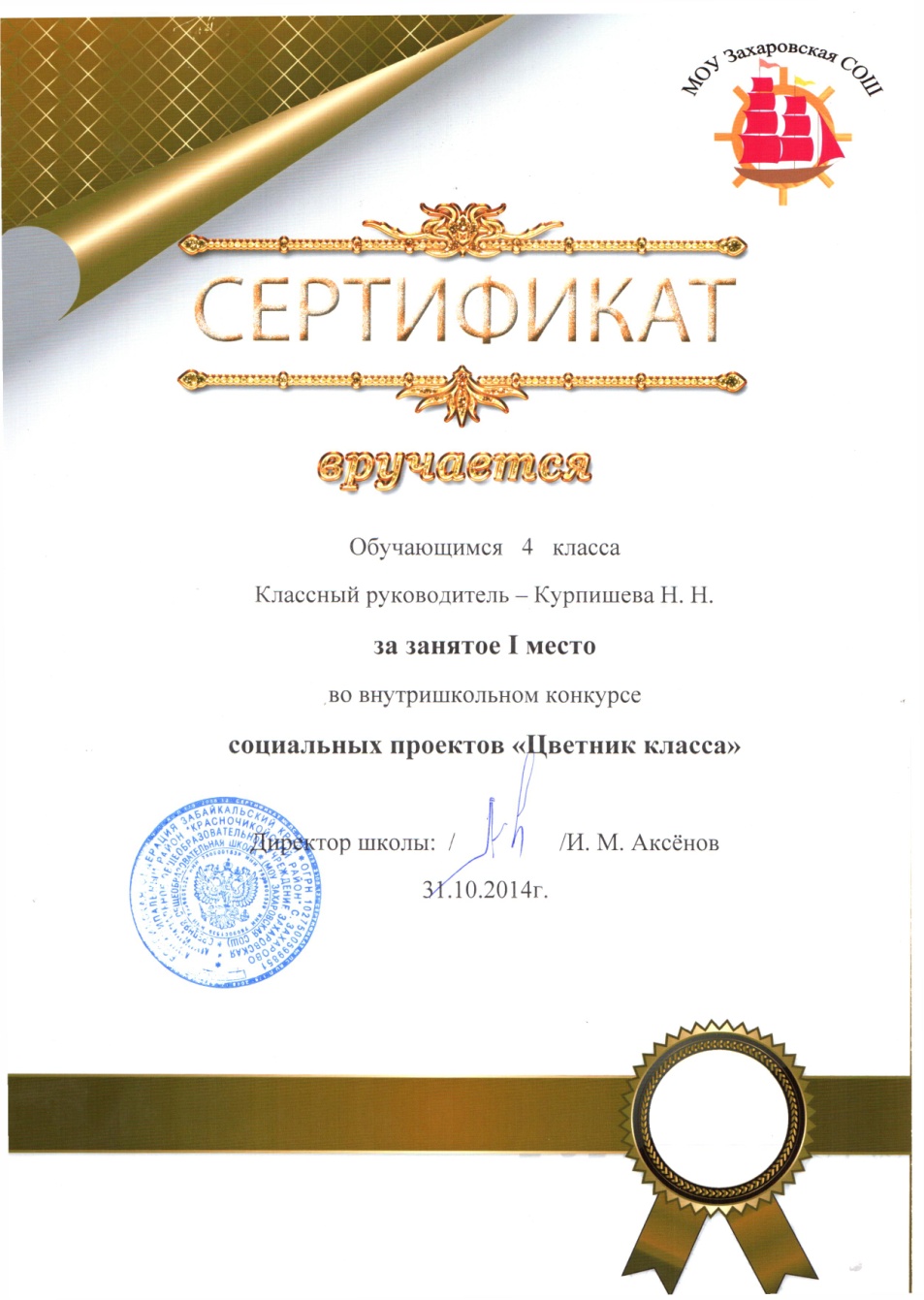
![]()

We have put a lot of effort into achieving the aesthetic beauty of our school yard. Each of us has contributed to this work and now everyone wants this beauty to stand here forever and everyone takes care of our school yard.
Having completed the project for the improvement of the school yard, a survey was conducted among students in grades 5.6. The survey involved 26 students. The results of the questionnaire can be traced in the charts.
To love your school means to be kind, respectful of children and adults, be ready to help your school and your teachers, never break anything, grow your flower at school and leave something about yourself. good memory.
Appendix No. 11

Literature:
1. Gulenkova M.A., Zamyatina N.G., Sergeeva M.N. medicinal plants. Tutorial for primary and secondary school students M. Egmont Russia Publishing House, 2012
2. V. Dal. Dictionary living great Russian language. Publishing House "Citadel", Moscow. 1998
3 Magazine "Dachny season" No. 5 2011, p.56.
"Prime Euroknow> 2002
4. Magazines "1000 tips" 2012 No. 23, No. 11, 2013 No. 10.
"Our School Yard"
Klimova Alexandra Nikolaevna
Russian Federation, Trans-Baikal Territory
Krasnochikoysky district, the village of Zakharovo
Municipal educational institution
Zakharovskaya secondary school, grade 5
Research Plan
In order to conduct research, I made a work plan.
Work plan:
View information about the research topic online and in 1000 Tips magazines.
Ask for help from adults
Interrogate people.
Conduct a survey.
Planting seedlings of flowers, caring for them.
On the topic of my project, I put forward hypothesis:
The improvement of the schoolyard of the elementary school will be completed if we create comfortable and cozy corners with our own hands, while we will develop a creative interest in practical activities in the field of landscape design;
Review
for the landscaping project “Our School Yard”, completed by a student
5th grade Klimova Alexandra.
this work done over the course of two years. Students during a tour of the territory primary school problem has been identified. Goals and objectives have been set, a work plan has been outlined, literature has been studied, figures of fairy-tale characters have been identified. A creative approach to the problem, cooperation with classmates and parents, interest, helped to achieve the goals and decorate the school yard comfortably. An ecological approach is traced in the project for the improvement of the courtyard. The paper describes the theoretical and practical material, presents photographs, created a computer presentation. This work is of interest and has practical significance.
Reviewed by: _______ (Kurpisheva N.N.)

